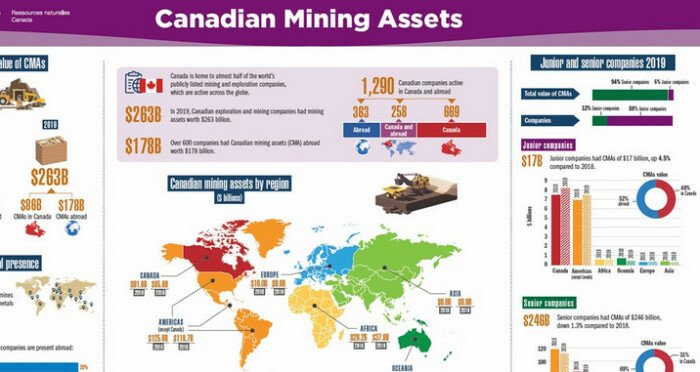|
Getting your Trinity Audio player ready...
|
In the dynamic world of global trade, supply chain resilience is emerging as a key factor in ensuring the uninterrupted flow of goods and services. Canada, as a major player in the global economy, is no exception to the challenges and opportunities presented by supply chain disruptions. This article delves into the landscape of supply chain resilience in Canada, highlighting the strategies, innovations, and initiatives that release its strength in the face of adversities.

1. The Foundation of Resilience: Understanding Supply Chains
Before delving into the nuances of supply chain resilience in Canada, it’s essential to grasp the basics of supply chains themselves. In its simplest form, a supply chain is a network that links suppliers, manufacturers, distributors, and customers. It’s the lifeline that releases products from conception to consumption.
2. The Ripple Effect of Disruptions: Challenges Faced by Canadian Supply Chains
Canada’s geographic expanse poses unique challenges to supply chain resilience. The vast distances between regions and the country’s heavy reliance on international trade make it susceptible to various disruptions. Natural disasters, such as wildfires and severe weather events, have the potential to halt transportation and disrupt the flow of goods.
3. Technological Advances: Navigating Disruptions with Data
Technology is playing a pivotal role in enhancing supply chain resilience in Canada. The adoption of cutting-edge technologies like the Internet of Things (IoT), blockchain, and artificial intelligence allows businesses to monitor and analyze supply chain data in real time. This release of data-driven insights helps in identifying potential disruptions early and making informed decisions.
4. The Human Factor: Skilled Workforce and Collaboration
The human factor remains integral to supply chain resilience. Canada’s workforce, known for its adaptability and skilled labour, plays a crucial role in keeping supply chains robust. Collaboration across organizations, industries, and government bodies is another critical aspect that releases the strength of Canadian supply chains. Public-private partnerships, information sharing, and joint initiatives ensure a coordinated response to disruptions.
5. The Green Imperative: Sustainability and Resilience
The release of sustainable practices within supply chains helps reduce environmental impact, lower operational costs, and increase resilience. Initiatives such as carbon footprint reduction, eco-friendly packaging, and responsible sourcing are gaining traction, not only as ethical choices but as resilience strategies.
6. Lessons from the Pandemic: Building Resilience Post-COVID-19
The COVID-19 pandemic released an unprecedented disruption to global supply chains. In Canada, the crisis served as a wake-up call, prompting businesses to reevaluate their chain strategies.
7. Government Initiatives: Policies Supporting Resilience
The Canadian government recognizes the importance of chain resilience and has introduced policies and incentives to bolster it. Investment in critical infrastructure, trade agreements that diversify trading partners, and funding for research and development in chain technologies are all aimed at ensuring the robust release of Canadian supply chains.
8. Innovation and Adaptation: Key to Future-Proofing Supply Chains
Innovation is at the heart of supply chain resilience. Canadian businesses are continually exploring innovative solutions to enhance their supply chains. Robotics and automation are streamlining manufacturing and distribution processes. 3D printing is revolutionizing production, allowing for more flexible responses to disruptions.
9. Risk Assessment and Mitigation Strategies
In an era of increased supply chain disruptions, Canadian businesses are placing a strong emphasis on risk assessment and mitigation. This involves identifying potential vulnerabilities and developing strategies to mitigate them. These strategies can include dual sourcing, creating redundancy in critical components, and implementing robust contingency plans.
10. Supply Chain Visibility
Supply chain visibility has become paramount for resilience. Canadian companies are investing in advanced chain management software and platforms that offer real-time monitoring and transparency across the entire supply chain. This visibility enables quick responses to disruptions and helps in optimizing the flow of goods.
11. Transportation Innovations
Transportation is a critical component of the chain, and Canada is embracing transportation innovations to enhance resilience. This includes the exploration of autonomous vehicles, drone deliveries, and efficient route optimization to reduce transit times and enhance flexibility.
Conclusion
In the ever-evolving landscape of global trade, the release of chain resilience remains an ongoing journey. Canadian businesses and industries are learning from past disruptions and embracing technologies and sustainable practices to strengthen their supply chains. Collaboration, both domestically and internationally, is pivotal in addressing challenges that transcend borders.
Supply chain resilience is no longer a choice but a necessity in today’s interconnected world. As Canada continues to adapt, innovate, and invest in building resilient supply chains, it ensures the reliable release of goods and services, contributing to economic growth and stability not only within its borders but on the global stage. The lessons learned from the challenges of the past release a promising future of resilience for Canadian supply chains.
You may also find this information useful:
